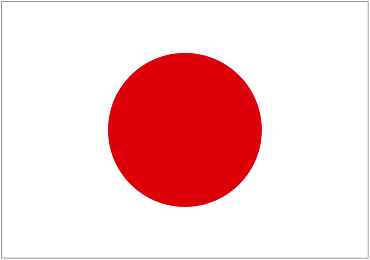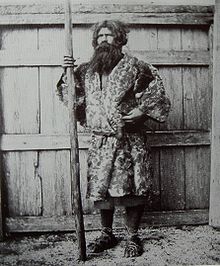Monday, December 5, 2011
Reflection
Disneyization in Japan
There are 4 aspects of Disneyization. They are theming, hybrid consumption, merchandising and performative labour.
Theming
Clothing institutions or objects in a narrative that is largely unrelated to the institution or object to which it is applied, such as a casino or restaurant with a Wild West narrative.
In Japan, there are cafe which are themed as “maid cafe”. In this maid cafe, all the service staffs in the cafe will dress like maids and serve their guests. This goes to show that Japan has adopted the themeing aspect of Disneyization.
One example of themed cafe in japan
Hybrid Consumption
A general trend whereby the forms of consumption associated with different institutional spheres become interlocked with each other and increasingly difficult to distinguish.
For example, in Tokyo Disneyland, besides the themepark, there are retail shops for visitors to walk around and purchase gifts. There are also restaurants that are available for dining and also accommodation for consumers to stay longer in this attraction. Therefore this shows that Japan has adopted the hybrid consumption of Disneyization.

One example of Tokyo Disney resort Hotel
Merchandising
The promotion and sale of goods in the form of or bearing copyright images and/or logos, including such products made under licence
In Japan, there are merchandise sold in the shape of kimono for example keychains that are carved to look like kimono or where the locals hand knit mini kimono keychains. This can promote their culture and tradition whereby visitors can purchase them. This goes to show to show that Japan has adopted the merchandise aspect of Disneyization.

One example of a kimono keychain merchandise.
Performative Labour
The growing tendency for frontline service work to be viewed as a performance, especially one in which the deliberate display of a certain mood is seen as part of the labour involved in service work.
The service staffs in japan provide very good service as they have a certain expectation to make when they are serving guest. One example is from the video of the maid cafe, the service staffs are suppose to deliver a certain mood and service. They have to greet with specific words, smile etc. This goes to show that Japan has adopted the aspect of performative labour of Disneyization.
Tourism Impacts on the authentic culture
Due to tourism, the discrimination against the Ainu people has decreased in Japan. Tourism had strengthened their relationship in the area and as there are active involvements in tourism it has resulted in numerous changes for them in terms of economically, socially and culturally. This paper goes to show that tourism in the Ainu culture are the representatives of Ainu in the Japanese society.

Authenticity of the culture
From the point of view of a tourist, I feel that it is definitely possible to experience the authencity of the Ainu culture. There are events such as the Ainu Festivals, whereby tourist can experience and know more about their true culture. For example, from May to the beginning of October, tourist can visit and watch a play “The Yukar” based on an ancient saga performed in Ainu Kotan at the Akan ko onsen hot spring. It is a poem passed down through the generations of the Ainu people.

Also, there is a ceremony called Iomante, which was originally conducted to send the spirit of the bear to the gods is brought forward to the modern age with music and dancing. At around 8pm, there will be a group of people singing while carrying their torches along the hot spring. As everyone is welcome to the torch parade, tourist can truly experience the ceremony and get to know more about the Ainu culture.

Culture and Traditions of Ainu People
In northern Japan, on the island of Hokkaido and a part of the Russian Sakhalin Island, lives a ethnic indigenous group, called Ainu. Ainu are shorter than the Japanese people, with lighter skin, robust body and short limbs. The Traditional Ainu culture is quite different compared to the Japanese culture. The Ainu people have wavy hair and the body hair is a lot. The Ainu men wear large beards and mustaches which a considered a sign of beauty. The woman even tattooed their lower facer to resemble a beard.
The ainu traditional cuisine consists of boiled or roasted meat such as bear, fox, wolf, ox and horse. They also consume fish, herbs and vegetables. They do not consume raw fish or flesh.
In Ainu, the people have a habit of capturing a bear cub where the woman is in charge of taking care of it like a child until its 2-3 years old, they will sacrifice the bear and the men will drinks its blood to get its power, as they are considered powerful spirits which can act on the benefit of the people.
Ainu lived in rectangular huts with walls and roof made of bundles of reed and rush without partitions and with a fireplace inside. There was no chimney, only a hole at the angle of the roof, one window and two doors. Without furniture, the family slept over platforms made of wood covered with rush mats, and as they did not have bed linen, they slept dressed.

Their traditional dress was a robe is made from the inner bark of the elm tree, called attusi. Most of the clothing consists of a simple short robe with straight sleeves, which was folded around the body, and tied with a band around the waist. Undergarments are worn by women.

The Ainu religion was animist where they believe that all the beings and many natural objects were endowed with a spirit. When a living being dies, the spirit is freed and this spirit can be good or evil. To avoid the evil spirits, the Ainu used to work on wood coarse representing the spirits, with a human form, called inaos. Today, inaos are simple sticks made by cuts of a knife. The inaos are thrusted into the grounds around and they are like prayers of the Ainu for protection.
The most important person in the Ainu village was the shaman, the person treating with the spirits. The shaman had other animal spirits which helped him in his spells to cure the diseases.
When an Ainu dies, his family ignite a large bonfire inside his hut and sends messengers for informing his friends and remote relatives. Sacrifices and libations are offered to the spirits, so that they will welcome the spirit of the dead, the family celebrate a banquet and the body buried the following day. The tomb is marked by a small mound and a wood and bamboo post crowned with a kind of an arrow, if the dead was a man, and with a rounded point.
Dancing and singing are very important to the Ainu. The rhythm is provided by singing and handclapping, and the women take the lead in dancing. One musical instrument attributed to the Ainu is the "mukkuri", which is made from a small, thin piece of bamboo. The instrument is held in front of the mouth and a sound is produced by pulling the strings.

Perception of the place

Sunday, December 4, 2011
Culture of Japan
Geisha
Geisha are traditional Japanese artist-entertainers. Geisha were traditionally trained from young childhood. Geisha houses often bought young girls from poor families, and took responsibility for raising and training them. The training starts from a young age and encompasses a wide variety of arts, including Japanese musical instruments and traditional forms of singing,dance, tea ceremony, poetry and literature. Modern geisha are no longer bought by or brought into geisha houses as children. Becoming a geisha is now entirely voluntary. Most geisha now begin their training in their late teens.

Samurai
Samurai is a common term for a warrior in pre-industrial Japan, which came into use during the Edo period. However, the term samurai now usually refers to warrior nobility.

Kimono
The kimono is a traditional form of clothing worn by Japanese women and men. There are many different kimono styles. There are a few types of kimono, one of them is Furisode, a type of formal kimono where young single adults will wear, and Houmongi for the married woman and also Tomesod kimono, where married woman would normally wear to a japanese wedding ceremony of a close relative.

Houmongi

Furisode

Tomesode Kimono
References
Anonymous. (n.d) Geography. Adapted from: http://www.japan-guide.com/list/e1000.html
Anonymous. (n.d) Japan - Language, Culture, Customs and Etiquette. Adpated from: http://www.kwintessential.co.uk/resources/global-etiquette/japan-country-profiles.html
Anonymous. (n.d.) Geisha - Geisha information, Geisha pictures, where to see Geisha, Geisha and prostitution and Maiko - trainee Geisha. Adapted from: http://www.japaneselifestyle.com.au/culture/geisha.html
Anonymous. (n.d) Samurai Guide including samurai meaning, samurai history, samurai culture, samurai pictures, samurai swords and samurai in popular culture. Adapted from: http://www.japaneselifestyle.com.au/culture/samurai.html
Anonymous. (n.d) Kimono: Over 55 pages of kimono pictures, kimono style descriptions, kimono history, kimono fashion competitions, places to buy kimonos and articles relating to kimonos. Adapted from: http://www.japaneselifestyle.com.au/fashion/kimono.html
Anonymous. (n.d) Furisode - The formal kimono. Adapted from: http://www.japaneselifestyle.com.au/fashion/furisode_kimono.html
Anonymous. (n.d) HOUMONGI. Adapted from: http://www.japaneselifestyle.com.au/fashion/houmongi_kimono.html
Anonymous. (n.d) TOMESODE KIMONO. Adapted from: http://www.japaneselifestyle.com.au/fashion/tomesode_kimono.html
Michael Weiner. (n.d) Race, ethnicity and migration in modern Japan, Volume 2. Adapted from: http://books.google.com.sg/books?id=_ffOut-Ay_8C&pg=PA302&lpg=PA302&dq=tourism+impacts+on+the+ainu+people&source=bl&ots=GvaILHXlS0&sig=BECJe0qBfqL4jR1Des5yfFXPGw8&hl=en&ei=qojcTpHmG8HXrQfC6K2SDw&sa=X&oi=book_result&ct=result&resnum=2&sqi=2&ved=0CCQQ6AEwAQ#v=onepage&q=tourism%20impacts%20on%20the%20ainu%20people&f=false
Anonymous. (n.d) Ainu people. Adapted from:http://en.wikipedia.org/wiki/Ainu_people
Anonymous. (n.d) Heritage of Japan- Discovering the Historical Context and Culture of the People of Japan. Adapted from: http://heritageofjapan.wordpress.com/just-what-was-so-amazing-about-jomon-japan/1-temp-from-africa-to-east-asia-the-tale-of-migration-and-origins-emerges-from-our-mitochondria-dna/origins-of-the-jomon-jomon-connections-with-the-continent-and-with-todays-japanese/who-are-the-ainu-people/
Stefan Anitei (February 21st, 2008, 22:16) 9 Amazing Things About the Ainu People. Adapted from: http://news.softpedia.com/news/9-Amazing-Things-About-the-Ainu-People-79277.shtml
Anonymous. (n.d) Experiencing Ainu culture Adapted from: http://www.jnto.go.jp/eng/indepth/scenic/hokkaido/hokkaido_05.html
Lisa Hiwasaki (2000) Ethnic Tourism in Hokkaido and the shaping of Ainu Identity. Adapted from: http://www.jstor.org/pss/2672026
http://www.google.com.sg/imgres?q=geisha&um=1&hl=en&sa=N&rlz=1C1GPCK_enSG461&biw=1034&bih=619&tbm=isch&tbnid=rvRpAiKj_5gbzM:&imgrefurl=https://memekatie.wordpress.com/2009/12/07/my-favourite-japan-blog-posts-july-2009/&docid=40LX3UEDf4cLGM&imgurl=http://memekatie.files.wordpress.com/2009/12/geisha-3.jpg&w=427&h=640&ei=wIPcTv7uPNDKrAfhv6D6DQ&zoom=1&iact=hc&vpx=400&vpy=219&dur=9&hovh=275&hovw=183&tx=118&ty=161&sig=102313871370325200359&page=5&tbnh=187&tbnw=131&start=55&ndsp=12&ved=1t:429,r:2,s:55
About Japan

Location:
An island nation in East Asia. Located in the Pacific Ocean, it lies to the east of the Sea of japan, china, North Korea, South Korea and Russia, stretching from the Sea of Okhotsk in the north to the East China Sea and Taiwan in the south.
Area:
More than 50% of the country is mountainous and covered by forests. Japan is politically structured into 8 regions and 47 prefectures
Population:
The population of Japan is about 125,000,000, including approximately two million foreign residents. More than half of this two million is of Korean descent.
Earthquakes and Volcanos:
Japan is located in a region where several continental plates meet therefore the country often experience earthquakes. For the same reason, there are many volcanos in Japan. Japan's most famous volcano and highest mountain is mount Fuji.
Climate:
The climate in most of the major cities (Tokyo) is temperate to subtropic and consists of four seasons. The winter is mild and the summer is hot and humid. There is a rainy season in early summer, and typhoons hit parts of the country every year during late summer. The climate of the northern island of Hokkaido and the Sea of Japan coast is colder, and snow falls in large amounts. In Okinawa, the mean temperature of January is a warm 17 degrees Celsius.
Capital:
Tokyo
Sunday, November 20, 2011
About me

